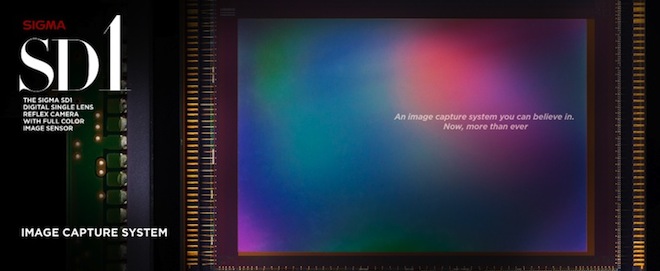
Like how a doctor might analyse a mentally ill patient’s brain to give him clues about how a ‘normal’ brain functions, we turn our attention to the $9000 Sigma SD1.
No, not the price.
Yes, that price is rather crazy. But Sigma have actually taken the next step in imaging before anyone else and I believe they deserve some credit for that. Foveon is a much purer sensor design than we have in our typical digital cameras – it captures light like film and is not compromised by the usual Bayer sensor’s made up information (interpolation) and work-arounds like low-pass filters to avoid moire.
Most DSLR shooters are familiar with moire, and with the Sigma SD1 making the news now is a good time to draw the two together and explain how sensors work.
Normal DSLRs can only capture one wavelength of light per pixel – either red, green or blue. As a result they are prone to moire patterns which occur when information is missing from an image, just like when lines are skipped to produce video from DSLRs.
For stills, a low-pass filter blurs the image slightly just before it hits the sensor and helps prevent moire. How? The light disperses and the image is not as sharp, so that very fine details are smudged. Patterns finer than the sensor can resolve due to it’s one colour per pixel structure result in missing colour information, and this missing data causes rainbow (false colour) interference patterns in the final image.
Light is actually a wave – which is measurable, we call that a wavelength. At the long end of the wave is infrared and at the short end is ultraviolet. In the middle is green, and it’s there where the most amount of detail that our eyes pick up on is stored. It’s the largest part of the wave.
Typical DSLR sensors captures twice as much information from the green part of light’s wavelength, than from the red or blue parts. On a DSLR, 50% of the sensor’s pixels capture only green. That helps resolution, but not colour balance or rich shades of red and yellow, for example.
Thankfully red, green and blue light can be mixed together to form every other colour in existence, a bit like how a painter would use red, blue and yellow paint and mix them together on his palette to produce other colours.
The job of a CMOS sensor is a little like that of the painter. To construct the digital image, first it reacts to light and then re-produces an image from it that our eyes understand. 35mm film just needs to capture light, but to get a digital image you need to process the red, green and blue wavelengths separately and reconstruct – like the painter and his paint palette.
So the light of red, green and blue wavelengths (RGB) is converted from analogue signals to digital. The curvy wave of physics gets turned into a digital one – stepping between ones and zeros. Lastly the RGB data is de-bayered to produce the full colour image.
De-bayering is necessary because of the Bayer structure of the sensor as I touched on above. A 2 dimensional plain over which light falls, with one pixel only designed to respond to either red, green or blue. (Incidentally it’s that structure of pixels – red, green or blue only – that means when you get a stuck, hot or dead pixel, you might have a red, green or blue dot appear on the image – and it is the same way TV / LCD screens show an image – remember looking closely at CRT screens to see the image break down into tiny red, green and blue dots?).
Sigma’s Foveon sensor has a better structure. Each pixel is 3 layers deep – it captures all three wavelengths of light at different depths, because each wavelength penetrates the sensor at different levels.
Therefore there is no need for the Bayer / Colour Filter Array / Interpolation technique to produce the full colour image, and no risk of moire – hence no low pass filter required.
Foveon’s sensor technology is clearly superior to the competition, at least on paper. Effectively 15MP is really capturing 3x more colour data than a traditional Bayer CMOS sensor, and resolution is better since no interpolation of missing colour is needed and no low pass filter blur gets in the way.
So colour data will rival that from a 45 megapixel Bayer CMOS, and resolution will be roughly equivalent to 30MP.
What’s more, it is protected by patents so Canon cannot copy it. Sony have tried variations on the Bayer Colour Filter Array with their CineAlta F65, but that really just amounts to rotating the array and is based on the same principals, and is just as susceptible to moire – although it is obviously much less severe than the EXTREME moire patterns produced by line-skipping on DSLRs.
Sigma’s purchase of Foveon is a good move. In time, the technology will become a mass production commodity and mass market will beckon.
For now, let’s hope Sigma can sell a lot of $9000 APS-C DSLRs without live view or movie mode so Foveon doesn’t go out of business and this great technology laid to waste.
It could be like Betamax versus VHS all over again!
View the full Sigma SD-1 micro site and full resolution samples here


